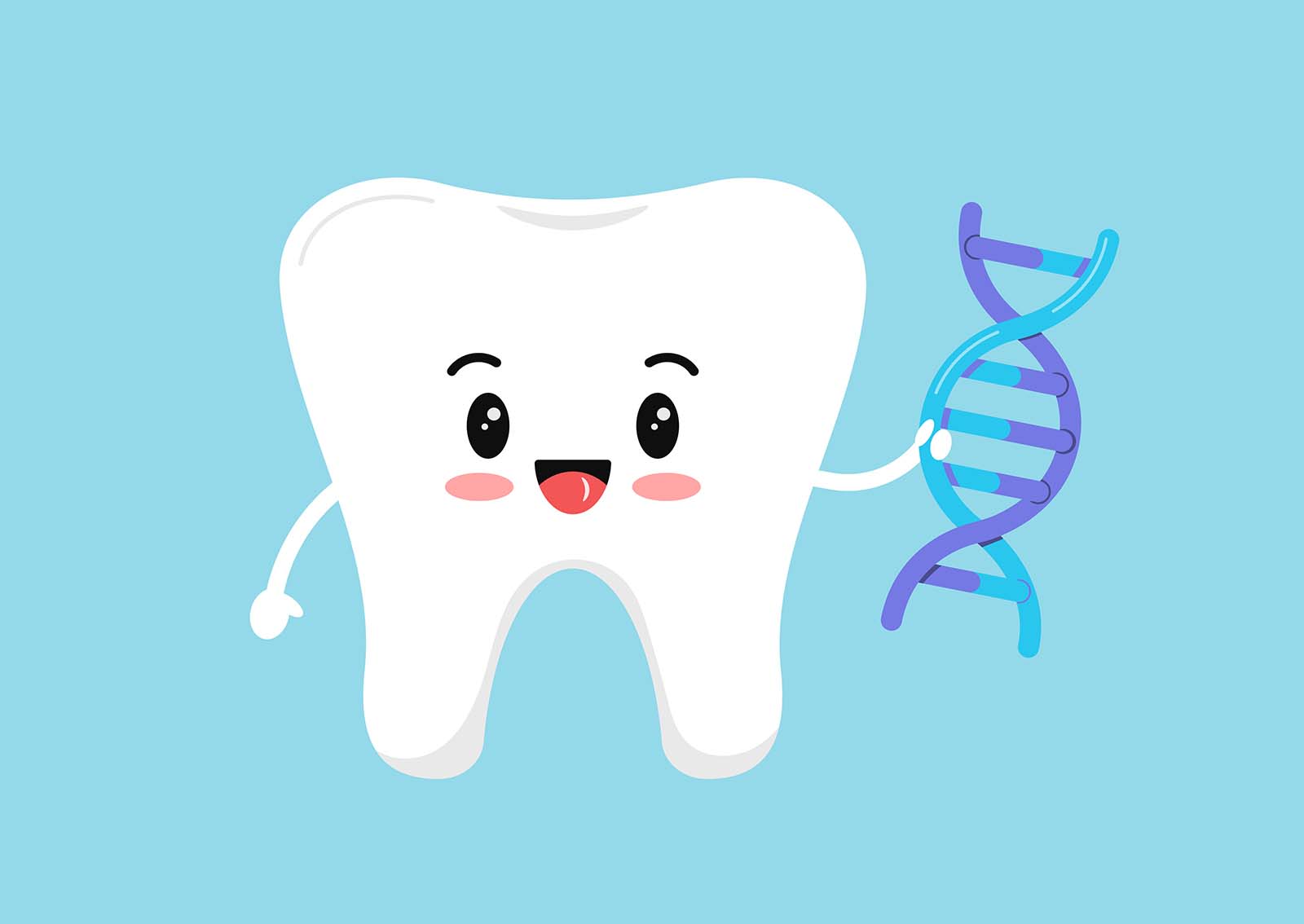
The shape, timing and strength of your child’s teeth are not random events, because genetics quietly guides everything from when the first tooth appears to how the jaw grows, how tightly teeth crowd together and even how resistant their enamel is to everyday acids and sugar attacks.
Why genetics matter for tiny teeth
Have you ever noticed how some children get almost identical smiles to their parents? The resemblance is not just cute. It is your first visible clue that genes influence dental development. Genes carry instructions that help guide jaw size, tooth shape, enamel quality and eruption timing. According to our editor’s research, dentists often see similar bite patterns repeating across generations in the same family. That can mean repeated crowding, deep bites or gaps that follow a familiar pattern. Understanding this background helps you see that your child’s mouth is not starting from a blank page.
How genetics set the blueprint for tooth development
Inside the jaw, baby teeth and permanent teeth form long before they appear. Specialised cells follow a genetic script that tells them when to divide and where to grow. This script covers everything from root length to crown size and the number of teeth produced. Most children are born with a complete set of tooth germs already forming inside the jaw. Genetic variants can slightly adjust this programme, leading to small or large teeth or altered shapes. As a result of our editor’s reviews, paediatric dentists often describe genes as the “blueprint” and everyday habits as the “builders”. Both matter, but the blueprint sets many starting limits.
Tooth size, jaw size and crowding in children
One of the clearest genetic effects appears in the balance between tooth size and jaw size. If a child inherits relatively large teeth from one parent and a smaller jaw from the other, crowding becomes more likely. Teeth then struggle to line up neatly and may twist or overlap. The opposite combination, with small teeth and a larger jaw, can create noticeable gaps. According to our editor’s research, patterns like these often show up when dentists compare family photos over time. You might see similar spacing in siblings, parents, aunts and uncles. While orthodontic treatment can gently move teeth, the underlying genetic tendency usually remains part of the story.
Eruption timing and “late” or “early” teeth
Some children cut their first teeth around six months, while others wait much longer. In many cases, this difference is simply normal variation guided by genetics. If you or your partner were late teethers, your child may follow the same timetable. The same is true for permanent teeth appearing in the early school years. Dentists watch patterns more than single dates and compare them with family history. As a result of our editor’s reviews, mildly early or late eruption without other issues is often considered within normal limits. What matters more is symmetry, jaw growth and whether eruption matches overall development.
Missing, extra or unusually shaped teeth
Some children are born missing one or more permanent teeth, a condition called hypodontia. Others develop extra teeth, known as supernumerary teeth, which can block normal eruption. These patterns often run in families and clearly reflect genetic influences. Unusual shapes, like peg shaped lateral incisors or very pointed canines, also have strong hereditary components. According to our editor’s research, paediatric dentists ask about relatives with similar findings when they detect such variations. Early awareness allows better planning for orthodontic timing, space management and cosmetic solutions later. It can also prevent surprises when a permanent tooth simply never appears.
Enamel strength, colour and cavity risk
You might wonder why one child seems to get cavities easily despite similar brushing. Part of the answer lies in enamel quality, which is partly genetic. Some children naturally have slightly softer or more porous enamel, making decay easier. Others inherit deeper pits and grooves on the chewing surfaces of molars. These tiny valleys trap plaque and are harder to clean completely. As a result of our editor’s reviews, dentists sometimes describe families as “high risk” or “low risk” based on shared patterns of decay. Genetics does not mean cavities are guaranteed, but it can tilt the playing field.
Bite patterns, jaw growth and facial profile
Genetics strongly influences how the upper and lower jaws grow in relation to each other. You often see families where several members share a pronounced overbite or underbite. In an overbite, the upper jaw or teeth sit more forward than ideal. In an underbite, the lower jaw grows relatively more prominent. These relationships affect chewing, speech and long term joint comfort. According to our editor’s research, early orthodontic evaluation helps decide whether jaw guidance treatments might be useful during growth. The aim is not cosmetic perfection but healthy function that respects the inherited structure.
What parents can change despite genetic influences?
Hearing that genes play a big role can feel a little discouraging. The good news is that environment still matters a great deal. Diet, brushing quality, fluoride exposure and regular check ups can strongly modify the final outcome. Even a child with slightly weaker enamel can stay largely cavity free with careful habits. Avoiding long term bottle use at night, managing sugary snacks and protecting against trauma are all practical steps. As a result of our editor’s reviews, dentists consistently stress that genetics load the gun, but lifestyle pulls the trigger. In other words, you cannot rewrite the blueprint, but you can protect the building.
How dentists use family history during check ups
When you take your child to the dentist, questions about your own dental past are not random. Your dentist wants to know whether you had braces, frequent cavities or missing teeth. Information about gum disease, early tooth loss and jaw surgery in the family also helps. This background allows the dentist to predict possible pathways for your child. They can then suggest earlier orthodontic opinions, closer decay monitoring or additional preventative measures. According to our editor’s research, such targeted prevention is often more effective than generic advice. It turns family patterns from a source of worry into a guide for smarter follow up.
Working with your child’s natural smile
In the end, genetics give every child a unique dental starting point. Some will naturally have broad arches and evenly shaped teeth. Others will face crowding, spacing or enamel challenges despite excellent care. The goal is not to chase an identical movie star smile for every child. Instead, focus on a healthy, comfortable bite and teeth that are easy to clean. Respecting the inherited structure while using modern dentistry thoughtfully can achieve that balance. According to our editor’s research, children who see their smiles as part of the family story often feel more confident and cooperative with care.
